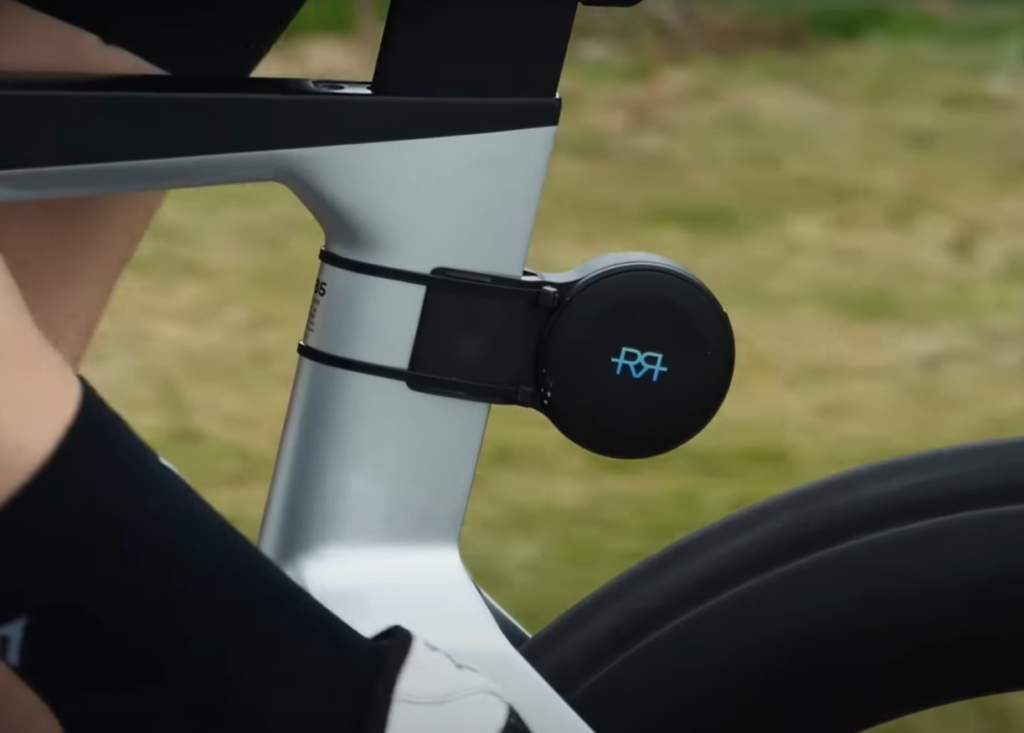Originally published at: Race Ranger Moves to Age Group Racing at Challenge Wanaka - Slowtwitch News

RaceRanger, the draft-detecting technology developed by former pro triathletes James Elvery and Dylan McNiece, is taking the next step in its evolution next month – it will be used by age-group athletes in a test at Challenge Wanaka.
Elvery and McNiece have been working on the project since 2014, but got serious about it in 2017 thanks to backing from World Triathlon. Jimmy Riccitello, IRONMAN’s head referee, has been working with RaceRanger since 2018. The devices have become a mainstay at pro races over the last couple of years thanks to their use at Professional Triathletes Organization (PTO) races and the IRONMAN Pro Series last year.
“Helping with the pros race and making it fairer is really important, and that’s obviously where Dylan and I both come from as racing pros,” Elvery said in an interview at last year’s IRONMAN 70.3 World Championship in Taupo. “So, our hearts lie there, but to make any sort of business like this work, it needs to be scaled to lots of people and that means getting to age groupers. So we’ve had that in mind right from the start. Now we’re at the stage where we’ve sort of got the pro side under control, where it can sort of roll out every week or a few times every weekend. Now the challenge is really to adapt the system to be able to be used by thousands of people.”
RaceRanger is developing a new iteration of the device that’s being used with the pros to make it “more relevant” to age group athletes, Elvery said. While those at the front end of the race gunning after world championship qualifying slots or age-group podiums will be fixated on the draft-detection capabilities, other athletes won’t be as concerned with that component of the devices. With that in mind, RaceRanger is looking to provide more safety-oriented features and enhanced live-tracking capabilities. Athletes can also be offered more data from their ride to enhance the experience. While draft-detection will remain a key component, the vision is to make it “more relevant for everyone and add value to all the athletes.”
At the pro events the RaceRanger technology has been used to assist the officials in making calls. The technology is there for the process to be completely automated, though.
“It’s just whether the sport’s ready for it, I think, and whether we we’ll trust the system to completely take care of everything,” Elvery said. “It’s like self driving cars. It could probably do it, but we’re probably not ready to go to sleep at the wheel yet. And so, I think eventually we’ll probably get there and that’ll mean a lot less motorbikes on the course. The interim step that we’re looking at (and we’ve always had in our concept), is to use that internet connection to provide the referees the information remotely, so they don’t need to be right there watching the situation. They can be a kilometer or so behind, or even one day just sitting in a tent monitoring what’s going on … That’ll have a big effect on the behavior, we think.”
Elvery is also confident that, at the end of the day, the RaceRanger technology can enhance safety even on crowded courses with thousands of athletes.
“If we can generally just keep everyone further apart, right from the start, that is a dangerous situation we can avoid,” he said. “We obviously don’t want to cause (races) to have to reduce their field sizes because that’d be a complete nonstarter. So we’ve got to have a way to work with the current number of athletes on the course, not to cause chaos, but to add those sorts of benefits we can for the athletes that it is relevant to.”
One possible concept would be to split the fields at events based on the priorities for different athletes.
“Perhaps there’s a a discussion to be had around segmenting the field where you might say athletes who want to qualify for Kona, or get a a placing in their age group, are entered in a certain category (or wave),” Elvery continued. “And they might get some other benefits that might be handy for them. Maybe there’s racking next to the pros, which they might value compared to being in the middle of the transition area.”
The RaceRanger technology could even be set up to differentiate between athletes in a different categories, only lighting up for athletes in a “competitive” wave, for example, while providing other data for others.
That’s all a ways away, though – first things first will be the test in Wanaka next month.
“In Wānaka we’ll be looking to get as hands on as possible with a good number of age-group bikes, to understand in detail the subtle differences in set-up between them and what we see with the pros,” Elvery said in a release today. “With the higher numbers, it will also clearly highlight to us which parts of our back-end processes won’t scale to the thousands, and need redesigning to make the step across.”